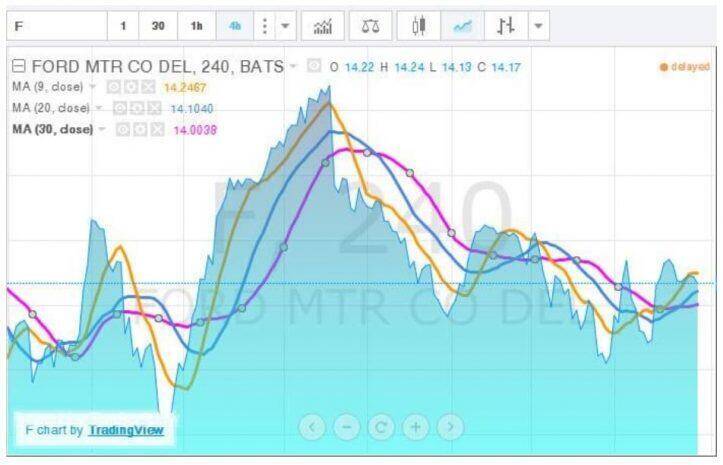Implementation of Artificial Neural Network for XOR Logic Gate with 2-bit Binary Input

By defining a weight, activation function, and threshold for each neuron, neurons in the network act independently and output data when activated, sending the signal over to the next layer of the ANN [2]. The weights are used to define how important each variable is; the larger the weight of the node, the larger the impact a node has on the overall output of the network [2]. Adding more layers or nodes gives increasingly complex decision boundaries.

The key to the neural network’s ability to learn the XOR operation is its ability to model complex nonlinear relationships between the inputs and outputs. By using multiple layers of neurons, each with their own nonlinear activation functions, the network can learn to represent complex functions and decision boundaries. Of course, there are some other methods of finding the minimum of functions with the input vector of variables, but for the training of neural networks gradient methods work very well. They allow finding the minimum of error (or cost) function with a large number of weights and biases in a reasonable number of iterations. A drawback of the gradient descent method is the need to calculate partial derivatives for each of the input values. Very often when training neural networks, we can get to the local minimum of the function without finding an adjacent minimum with the best values.
A Two Layer Neural Network Can Represent The Xor Function
This article will discuss the structure of a two layer neural network and how it can be used to represent the XOR function. The empty list ‘errorlist’ is created to store the error calculated by the forward pass function as the ANN iterates through the epoch. A simple for loop runs the input data through both the forward pass and backward pass functions as previously defined, allowing https://traderoom.info/is-trading212-a-reliable-brokerage-firm/ the weights to update through the network. Lastly, the list ‘errorlist’ is updated by finding the average absolute error for each forward propagation. This allows for the plotting of the errors over the training process. For this ANN, the current learning rate (‘eta’) and the number of iterations (since one epoch only has 1 data set) (‘epoch’) are set at 0.1 and respectively.
- Finally, it is limited in its ability to learn from a small amount of data.
- The library allows you to implement calculations on a wide range of hardware, from consumer devices running Android to large heterogeneous systems with multiple GPUs.
- Basically, it makes the model more flexible, since you can “move” the activation function around.
- The weights of the connections are adjusted in such a way that the output of the network is the desired output for the XOR function.
Basically, it makes the model more flexible, since you can “move” the activation function around. The first step of the train() function is to initialize the weights and biases of the neural network. This is done using the np.random.randn() function to generate random values for the weights, and the np.zeros() function to initialize the biases to zero.
Limitations of Using a Two Layer Neural Network to Represent the XOR Function
In our case, the neural network should be able to predict the output of the XOR gate for any input combination of 0s and 1s. Now that we have defined the problem of implementing an XOR gate with a neural network, we can move on to the implementation. In this section, we will explain the code provided and how it trains the neural network to perform the XOR operation. We will also discuss the parameters used in the code and how they affect the performance of the neural network. And now let’s run all this code, which will train the neural network and calculate the error between the actual values of the XOR function and the received data after the neural network is running. The closer the resulting value is to 0 and 1, the more accurately the neural network solves the problem.

We get our new weights by simply incrementing our original weights with the computed gradients multiplied by the learning rate. During the forward pass, the input X is multiplied by the weight matrix w1, and the bias vector b1 is added. Come on, if XOR creates so much problems, maybe we shouldn’t use it as ‘hello world’ of neural networks?
Solving the linearly inseparable XOR problem with spiking neural networks
A larger value of n_hidden may allow the network to better model the XOR operation, but may also lead to overfitting and slower training times. This cost is a measure of how well the network is performing on the training data, and is used to update the weights and biases during the backward pass. Hence, it signifies that the Artificial Neural Network for the XOR logic gate is correctly implemented. Spiking neural network (SNN) is interesting both theoretically and practically because of its strong bio-inspiration nature and potentially outstanding energy efficiency.
A programmable surface plasmonic neural network to detect and process microwaves – Tech Xplore
A programmable surface plasmonic neural network to detect and process microwaves.
Posted: Wed, 17 May 2023 07:00:00 GMT [source]
The weights of the connections are adjusted in such a way that the output of the network is the desired output for the XOR function. The first layer is the input layer, which receives input from the environment. The second layer is the output layer, which produces the output of the network. Each neuron in the network is connected to all of the neurons in the other layer. The connections between the neurons are weighted, meaning that the strength of the connection between two neurons is determined by the weight of the connection. If we change weights on the next step of gradient descent methods, we will minimize the difference between output on the neurons and training set of the vector.
What is a neural network?
Following code gist shows the initialization of parameters for neural network. From these graphs, it can be observed that the original conclusion (made from looking at the error graph in Fig. 7) remains true. At about 6000 iterations, all 4 graphs show a convergence towards the ground truth and each output is already close to the values that is expected. 7, the ANN becomes more and more accurate as the number of iterations it goes through increases. While the error falls slowly in the beginning, the speed at which the weights were updated increased drastically after around 2000 iterations.
This software is used for highly calculative and computational tasks such as Control System, Deep Learning, Machine Learning, Digital Signal Processing and many more. Matlab is highly efficient and easy to code and use when compared to any other software. This is because Matlab stores data in the form of matrices and computes them in this fashion.
How to Choose Loss Functions When Training Deep Learning Neural Networks – Machine Learning Mastery
The point is that it is a simple enough problem to solve by human and on a black-board in class, while also being slightly more challenging than a given linear function. Let’s look at a simple example of using gradient descent to solve an equation with a quadratic function. Some algorithms of machine learning like Regression, Cluster, Deep Learning, and much more. At the same time, the output values for each of the 4 different inputs were also plotted on separate graphs (Fig. 14).

